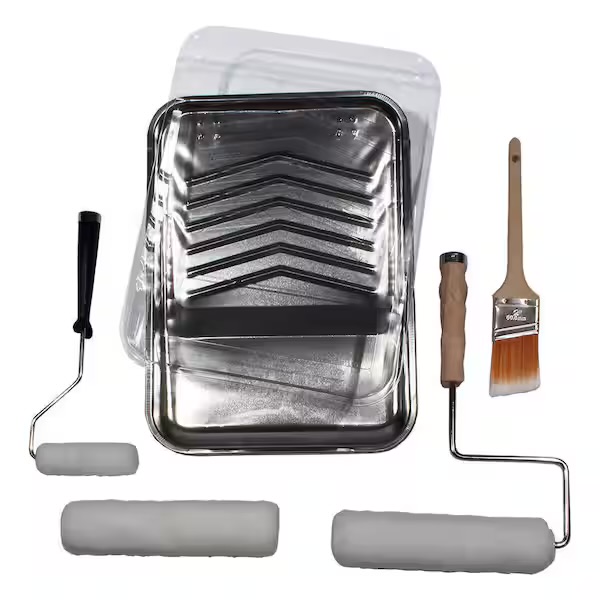For most painting jobs, you’ll need both a roller and a brush. The brush is ideal for narrow spaces or cutting in (creating a sharp-edged line where the wall meets the molding). Use a brush for detailed work and trim.
When it comes to speed, the roller can apply paint at least three times faster than the widest brush, making it a crucial tool. The beveled ends of the roller cover cannot lay down sharp paint lines, but this prevents the appearance of roller and overlap marks. Rollers are best suited for large, flat areas such as ceilings, walls, and floors. While specialized painting pads and tools are available for corners, edges, and faux finishes, the basic brush and roller are still necessary.
The key to successful painting lies in quality: it is essential to invest in high-quality brushes, rollers, and other painting tools. Although Lou may initially save money, the outcome will be marred by loose bristles and roller fuzz on the surfaces that have been painted.

🔺 With proper care, a good quality brush will remain effective for many years.
There are two main types of bristle brushes:
- Natural (typically hog bristles) for solvent-base finishes.
- Water-base finishes can utilize synthetic (nylon or polyester) products. (Some can also be used with alkyd-base finishes.)
Using the correct type of bristle brush is extremely important because natural bristles can swell in water-base paint, resulting in poor application. With proper care and cleaning, a paint brush will last for many years (see…..)
In some instances, a disposable brush is the most suitable choice:
For a cost-effective solution, consider disposable bristle brushes with unfinished-wood handles. These are perfect for applying materials that are hard to clean, such as contact cement and fiberglass resin. They are designed to be used once and then discarded. Foam brushes are another low-cost option that should be considered disposable. They work well for applying smooth finishes to small areas.
Paint rollers
The basic paint roller consists of a handle with a wire cage and threaded base, along with a roller cover featuring a nap designed to fit over the cage. For added convenience, an extender can be purchased for the handle to facilitate painting in higher areas. Given its durability, investing in a high-quality roller is prudent. Look for the following features:
- A sturdy frame with minimal flex under pressure
- Nylon bearings with easy rotation
- A reassuring grip
- A cage with a minimum of five wires and an anti-slip device to maintain the roller’s position

🔺High-quality roller cages featuring molded or wooden handles, when paired with premium roller covers, facilitate a smoother painting experience.
Roller covers
Purchase a high-quality roller cover with the correct nap thickness. Most projects require a roller with either a ⅜- or ½-inch nap. Inexpensive roller covers with paper cores (tubes) deteriorate quickly and cannot be reused. Resin cores last longer; they can be cleaned and reused. Look for:
- A sturdy resin core
- Beveled ends are designed to prevent paint beads from accumulating along the edges
- Seams that you cannot feel through the nap
- Thick, uniform nap that sheds minimal lint
Why do high-quality brushes come with a higher price tag?
QUALITY BRUSH

DISPOSABLE BRUSH

| Quality | vs. | Disposable |
| Flagged (split) bristle ends for a superior finish | Bristles | Unflagged bristle have straight ends and are generally stiffer than flagged bristles ends |
| Several wood spacer plugs to generate paint reservoirs between rows of bristles | Dividers | Individual wooden spacer plug |
| Reinforced, rust-resistant ferrule to securely hold bristles | Ferrule | Weak ferrule results in increased bristle fallout. |
| Tapered end for increased control | Handle | Blunt edge |

